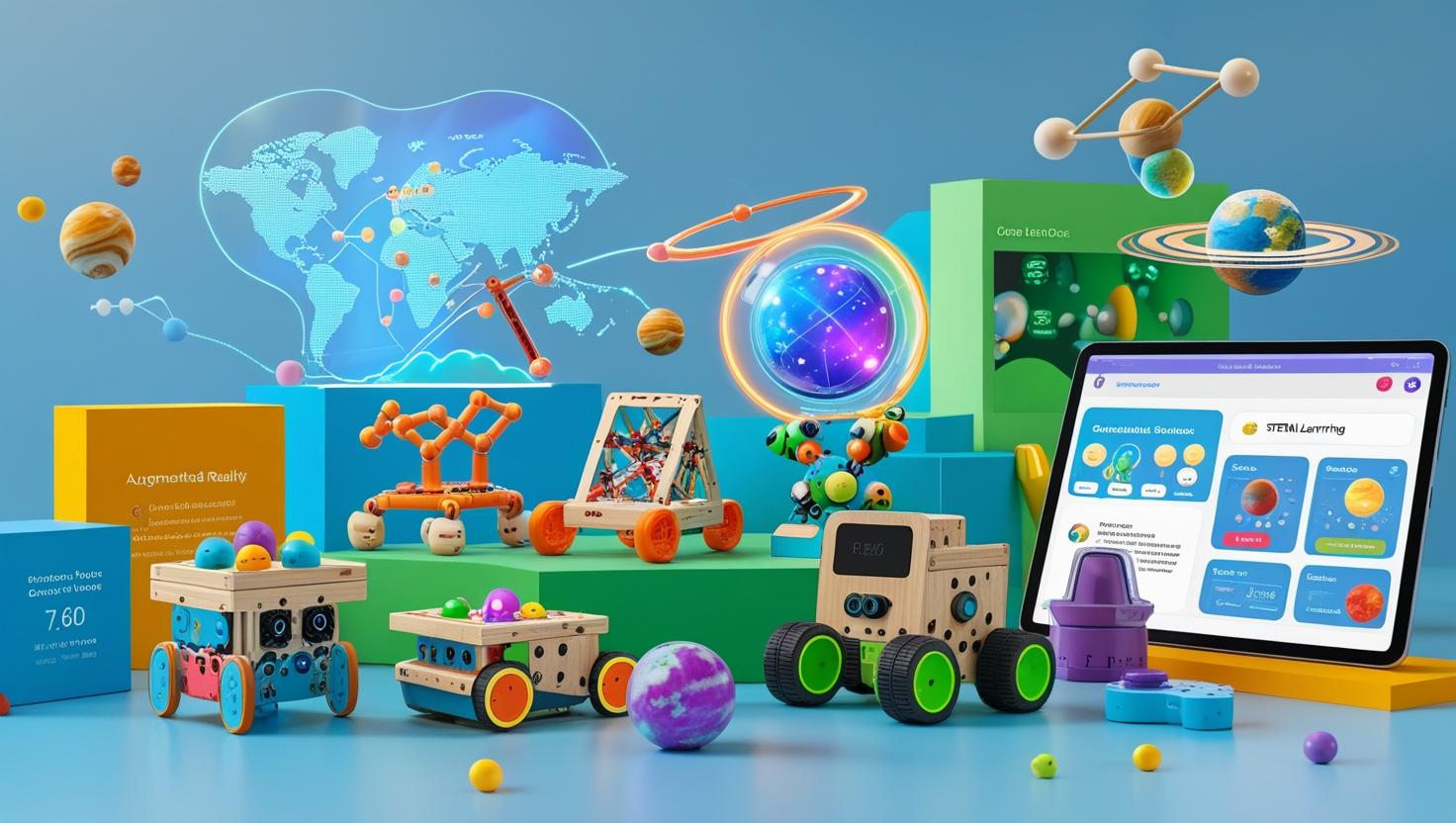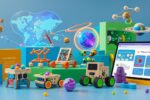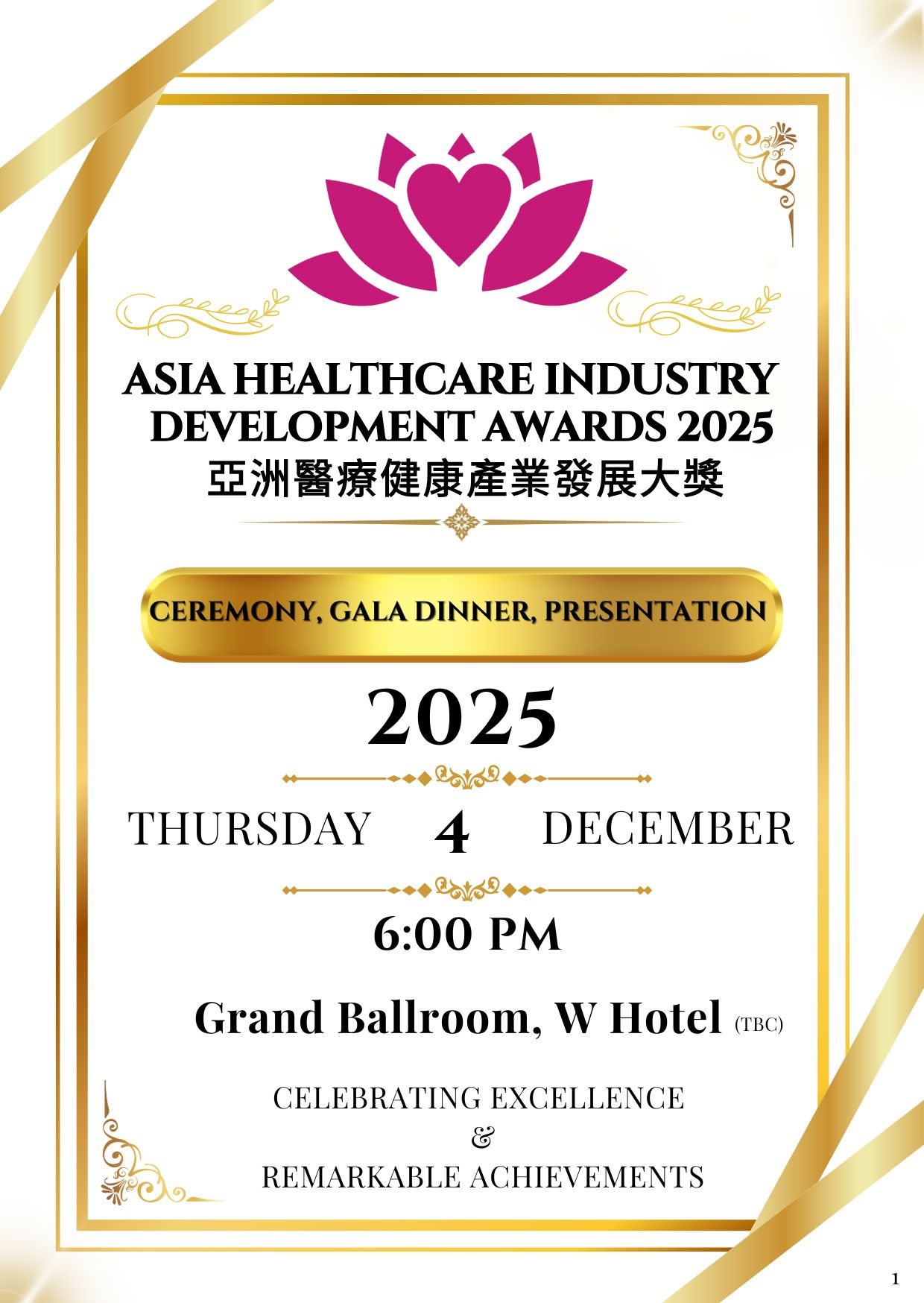The toy industry is experiencing a significant shift, with STEM (Science, Technology, Engineering, and Mathematics) toys emerging as a high-growth segment. Estimated at USD 61.7 billion in 2025 and projected to reach USD 152.8 billion by 2035 at a 9.44% CAGR (based on industry forecasts), the STEM toy market is driven by demand for educational play. For B2B stakeholders—manufacturers, wholesalers, and retailers—this surge offers substantial opportunities to capture market share and drive growth. This article explores the factors fueling the rise of STEM toys, key trends shaping the market, and actionable strategies for B2B buyers to thrive in this dynamic sector.
Why STEM Toys Are Booming
STEM toys are gaining popularity due to a global emphasis on preparing children for a technology-driven future. Parents, particularly Millennials and Gen Z, prioritize toys that foster critical thinking, problem-solving, and creativity—skills vital for modern careers. In 2024, 68% of U.S. parents reported prioritizing educational toys, with STEM products leading the category, according to industry surveys. Schools integrating STEM curricula further amplify demand, as parents seek toys that complement classroom learning.
The global push for STEM education is a key driver. Countries like Germany, Japan, and China have prioritized STEM initiatives, boosting demand for related toys. Germany’s focus on early childhood education has made it a leading European market for STEM toys, with brands like HABA and Ravensburger excelling. In Asia, coding and robotics toys are surging, supported by tech-savvy parents and government-backed STEM programs.
Key Trends in the STEM Toy Market
1. Coding and Robotics Toys Lead Growth
Coding and robotics toys, such as Sphero’s Indi and LEGO Education’s SPIKE Prime, are a significant portion of the STEM toy market. These products teach programming through hands-on play, appealing to children as young as four. In 2025, coding toys are expected to drive substantial sales, supported by app-integrated learning experiences.
For B2B buyers, sourcing coding and robotics toys offers high-margin opportunities. Manufacturers should partner with tech firms to develop app-integrated products, while wholesalers can focus on suppliers offering scalable, curriculum-aligned kits. Retailers can boost sales by bundling these toys with online tutorials or workshops, enhancing appeal to parents and educators.
2. Focus on Inclusivity and Accessibility
The STEM toy market is becoming more inclusive, with products designed for diverse age groups, skill levels, and abilities. Brands like LittleBits offer modular kits for beginners and advanced learners, while Thames & Kosmos create science kits accessible to children with disabilities. Gender-neutral marketing is also gaining traction, with many parents preferring toys that avoid traditional stereotypes, based on recent industry trends.
B2B buyers can capitalize by sourcing inclusive STEM toys that appeal to a broad audience. Retailers should highlight accessibility features in marketing, while distributors can prioritize suppliers with diverse product lines to meet varied market demands.
3. Integration of Augmented Reality (AR)
Augmented Reality (AR) is transforming STEM toys by blending physical and digital play. Products like Merge Cube and Osmo’s Genius Starter Kit allow children to interact with digital simulations of scientific concepts, such as chemistry or physics. The AR toy market is projected to grow at a 14.5% CAGR through 2025, offering significant B2B potential.
Manufacturers should invest in AR-integrated toys to stay competitive, while wholesalers can seek suppliers with expertise in “phygital” products. Retailers can enhance engagement by offering in-store AR demos, creating immersive shopping experiences that drive sales.
4. Sustainability in STEM Toy Production
Sustainability is a growing priority, with eco-conscious parents demanding toys made from recycled or biodegradable materials. Brands like Green Toys and PlanToys lead with eco-friendly science kits and wooden robotics sets. In 2025, sustainable STEM toys are estimated to account for a significant share of the segment’s sales, reflecting consumer and regulatory trends.
B2B buyers should prioritize suppliers with transparent, eco-friendly supply chains. Retailers can differentiate by promoting sustainable STEM toys through eco-focused marketing, appealing to environmentally conscious consumers and boosting brand loyalty.
5. Subscription and Customization Models
Toy subscription services, such as KiwiCo and MEL Science, are gaining traction by delivering curated STEM kits to homes. These services offer personalized experiences tailored to a child’s age and interests. In 2024, subscription-based toy sales grew by an estimated 18% globally, reflecting strong consumer demand.
B2B buyers can partner with subscription-focused suppliers to unlock recurring revenue. Wholesalers should seek scalable, customizable kits, while retailers can explore private-label subscriptions to build customer loyalty and increase margins.
Opportunities for B2B Stakeholders
The STEM toy market offers multiple avenues for growth. Here’s how stakeholders can seize these opportunities:
Manufacturers: Innovate and Collaborate
Manufacturers should invest in R&D for AI, AR, or sustainable STEM toys. Collaborating with educational institutions or tech companies can enhance product credibility and curriculum alignment. For example, partnerships with coding academies can lead to co-branded products appealing to schools and parents.
Wholesalers: Diversify Supplier Networks
Wholesalers should expand supplier networks to include innovators in coding, robotics, and sustainable toys. Prioritizing suppliers with certifications like FSC for eco-friendly materials or tech partnerships ensures a competitive portfolio. Offering bulk discounts on STEM kits can attract educational institutions and retailers.
Retailers: Enhance Customer Engagement
Retailers can drive sales through engaging experiences. In-store STEM workshops, online tutorials, or school partnerships can position retailers as trusted sources. Highlighting skill development or sustainability in marketing appeals to parents and educators. E-commerce retailers should optimize listings with detailed descriptions and reviews to boost conversions.
Challenges to Address
B2B buyers must navigate challenges such as:
- Supply Chain Costs: Complex STEM toy components increase production and shipping costs. Buyers should negotiate cost-effective sourcing without compromising quality.
- Regulatory Compliance: STEM toys with electronic components must meet CPSIA (U.S.) and EN71 (EU) standards. Buyers should verify supplier certifications to avoid compliance issues.
- Market Saturation: Increased competition requires differentiation through unique products or value-added services like customization.
Strategic Recommendations
To capitalize on the STEM toy boom, B2B buyers should:
- Invest in Innovation: Source AI- and AR-integrated toys to meet demand for cutting-edge play.
- Prioritize Sustainability: Partner with eco-friendly suppliers to align with consumer and regulatory trends.
- Target Educational Partnerships: Collaborate with schools or STEM programs to distribute products and build credibility.
- Leverage E-Commerce: Optimize online platforms with detailed product information to drive digital sales.
- Monitor Global Trends: Tailor sourcing to regional preferences, such as Germany’s focus on early education or Asia’s robotics demand.
Conclusion
The STEM toy market in 2025 is a high-growth opportunity for B2B buyers, driven by demand for educational play. By sourcing innovative, inclusive, and sustainable products, manufacturers, wholesalers, and retailers can capture market share. Staying ahead of trends like coding toys, AR integration, and subscriptions will be key to success. For more insights and sourcing opportunities, visit SourcingGuides.com.









